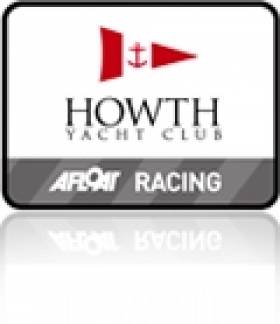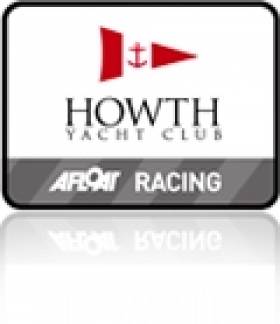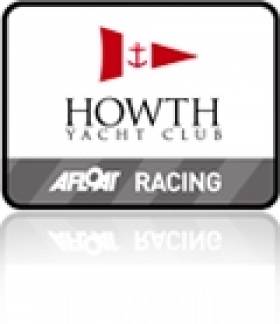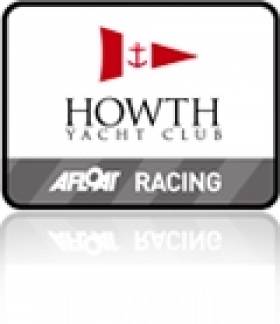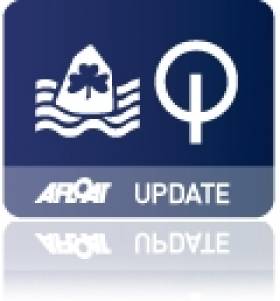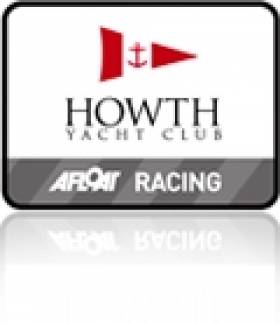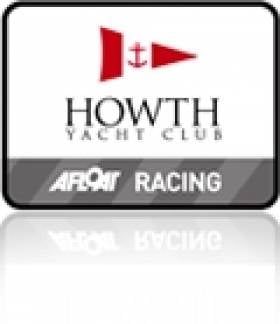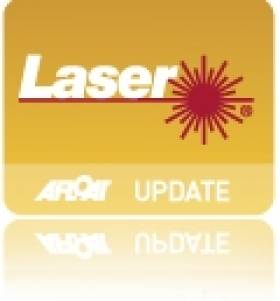Displaying items by tag: Howth Yacht Club
Howth Yacht Club's Lambay Race Spreads its Historic Net
#lambayrace – Howth Yacht Club's annual Lambay Race has developed over the years into the premier sailing celebration of the coast of Fingal writes W M Nixon. Indeed, there are few places in Ireland which can offer such a beautifully straightforward course of sufficient length to make it something of significance, yet without being unduly long. And the fact that the turning mark of Lambay is an island of such unspoilt natural beauty when so much of the East Coast has been over-developed is a bonus, as is the fact that the course is well clear of all commercial shipping.
It was 1970 when I first sailed the Lambay aboard the late Johnny Pearson's 8 Metre Cruiser/Racer Orana. We must have had a reasonably good race without actually winning, for my abiding memory is of the charm and fascination of the course, and the sense of a large fleet having a good time together in a race well worth sailing.
In those days, the course was simply round Lambay and back to the pierhead line in Howth, though whether you left Lambay to port or starboard would be decided on the day by the Race Officer. But this was a relatively new twist to the event - the traditional Lambay course was through the Sound inside Ireland's Eye, Lambay left to port, then finish back through the Sound.
By the 1980s we were racing our own family cruiser, the Hustler 30 Turtle, and the course was becoming a bit more complex with extra marks in order to ensure there'd be a real beat to suit the new type of hyper-efficient racing yachts. Despite that, we managed in 1981 to get so lucky with our tactics and sail decisions in a varying sou'westerly that little Turtle somehow won overall. But that's not something I'd recommend. It resulted in an ECHO handicap so punitive that in order to get any meaningful racing over the next few years, we had to go to the expense of getting the boat rated under Channel Handicap, which cost a fortune when we didn't have a bean.
Since then, the Lambay course seems to have become ever more complex, so in recent years there has been a certain nostalgia for the straightforward circuit of the old days. The earliest records are sketchy, for all we definitely know is that Howth SC member Henry Stokes put up a cup for a race round Lambay in 1899, yet it doesn't seem to have been raced for until maybe 1902, but it certainly was annually raced by 1904.
However, the best account we have of the Lambay Race in the old days is of the race of 1921, and if you happen to have a copy of A Centenary of Sailing, the history of Howth Yacht Club published for the club's hundredth anniversary in 1995, in it you'll find a vivid account of the race of 1921, written by Pat Walsh of the Royal Irish Yacht Club in Dun Laoghaire. He came second in the cruiser class in a breezy race, sailing single-handed in his lovely little 1905-built 25ft gaff yawl Sheila, which is still in existence.
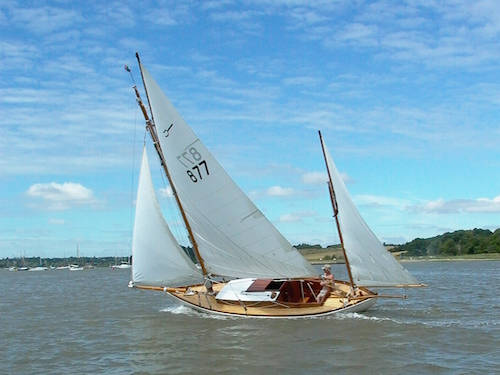
Sheila, the 25ft classic yawl which came second in the Lambay Race of 1921. She has been immaculately restored and maintained in the same ownership in Suffolk for 38 years, and is currently for sale.
The winner of the cruisers in 1921 was designer/builder John B Kearney, a member of Howth SC though he was Ringsend-based in those days. His boat was Ainmara, a 36ft 1912-built 9-ton yawl which, like Sheila, is still going strong. In fact, of the fourteen or so boats which raced round Lambay in 1921, at least ten are still very much in existence, as of course many of the boats which did the race in 1921 were Howth Seventeens.
So for years some of us have had the dream of a sort of a re-enactment of the 1921 race. But the actual movement towards doing something positive came from a different direction entirely. Last year, Howth Seventeen senior skipper Bryan Lynch and his daughter Harriet were asked if they'd like anything special arranged for their boat Echo's Centenary, and one of the good ideas which came up was a special course for the Howth Seventeens in the Lambay Race, though all that was special about it was that it was a welcome reversion to the traditional course.

Bryan & Harriette Lynch's Howth 17 'Echo' taking part in the Old Gaffers Golden Jubilee in Dublin Bay in 2013. It was their request for the revival of the original Lambay Race course to mark Echo's Centenary in 2014 which has resulted in this year's expansion of the traditional element in the Lambay Race on June 6th. Photo: Dave Owens
The idea rang a bell in other quarters, and when it was realized that the morning of the Lambay Race would see the Starter's Hut on the East Pier being manned just to send the Seventeens off on the time-honoured course direct round Lambay, a suggestion for an additional start ten minutes later for Old Gaffers and Classics was readily met.
However, it was well into the season when all this was arranged, but even with the very short notice, four old gaffers turned up to race the course, and had themselves a fine old time. The winner was the Old Gaffers Association International President Sean Walsh with his Heard 28 Tir na nOg, which is now Dun Laoghaire-based, but was of course for many years an adornment of Howth under the ownership of the late Gerry McAvoy, while second place went to the splendid big Galway Hooker Naomh Cronan, which was built sixteen years ago in a community project in Clondalkin, and is still going strong.
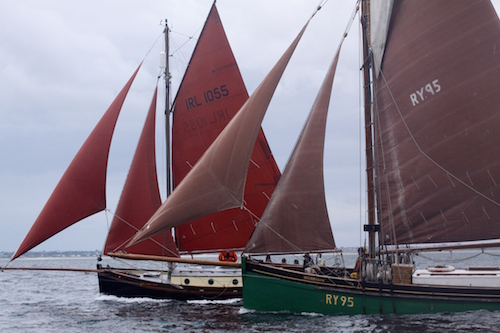
Sean Walsh’s Heard 28 Tir na nOg (left) won last year’s inaugural Lambay Classic. She is seen here with Joe Pennington’s restored Manx Longliner Master Frank, which is a possible entrant for this year’s race. Photo: Dave Owens
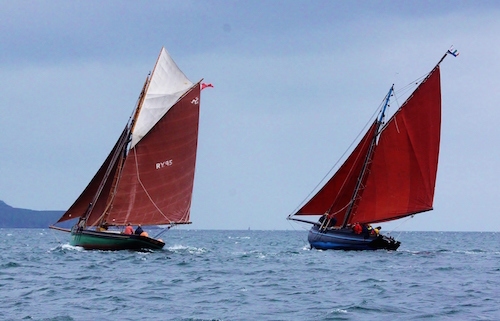
Master Frank (left) and the Galway Hooker Naomh Cronan, which was second in last year’s inaugural Lambay Classic.
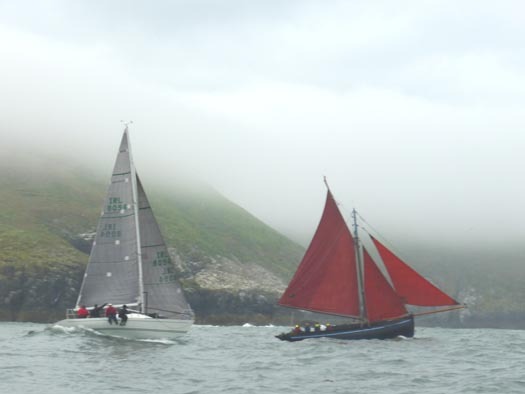
During last year’s Lambay Race, old gaffers like 'Naomh Cronan' made for a marked contrast with racing machines like Dave Cullen’s King One, but despite the large fleet there was room for everyone…… Photo: W M Nixon

…and Naomh Cronan, in company here with two Puppeteers, found the north coast of Lambay to be reminiscent of Connemara. Photo: W M Nixon
This involvement of the Old Gaffers in the Lambay Race of 2014 was an unofficial late addition to their annual programme. But for this year, Lambay Race Chairman James Markey first confirmed that the Seventeens wanted to do the traditional course again, and then sent the Dublin Bay Old Gaffers Association a slightly more formal invitation to take part, and they have accepted.
Already this special "show within a show" of the Old Gaffers in the Lambay is gaining traction. Although the 1921 winner Ainmara is now bermuda-rigged, she's regarded as an Honorary Old Gaffer, and noted offshore racing skipper Dickie Gomes, her owner since 1966, has indicated his intention of coming south from Strangford Lough to race round Lambay on June 6th.
Defending champion Sean Walsh is very much lined up to go again with Tir na nOg, as too is Niamh Cronan from Poolbeg. And a particularly interesting entrant which has been Poolbeg-based this past winter while her owner, Darryl Hughes, lived aboard and studied English-Irish literature in Trinity College, is the magnificently restored 43ft Tyrrell-built 1937 ketch Maybird, which was berthed in Howth for some weeks in 2012.
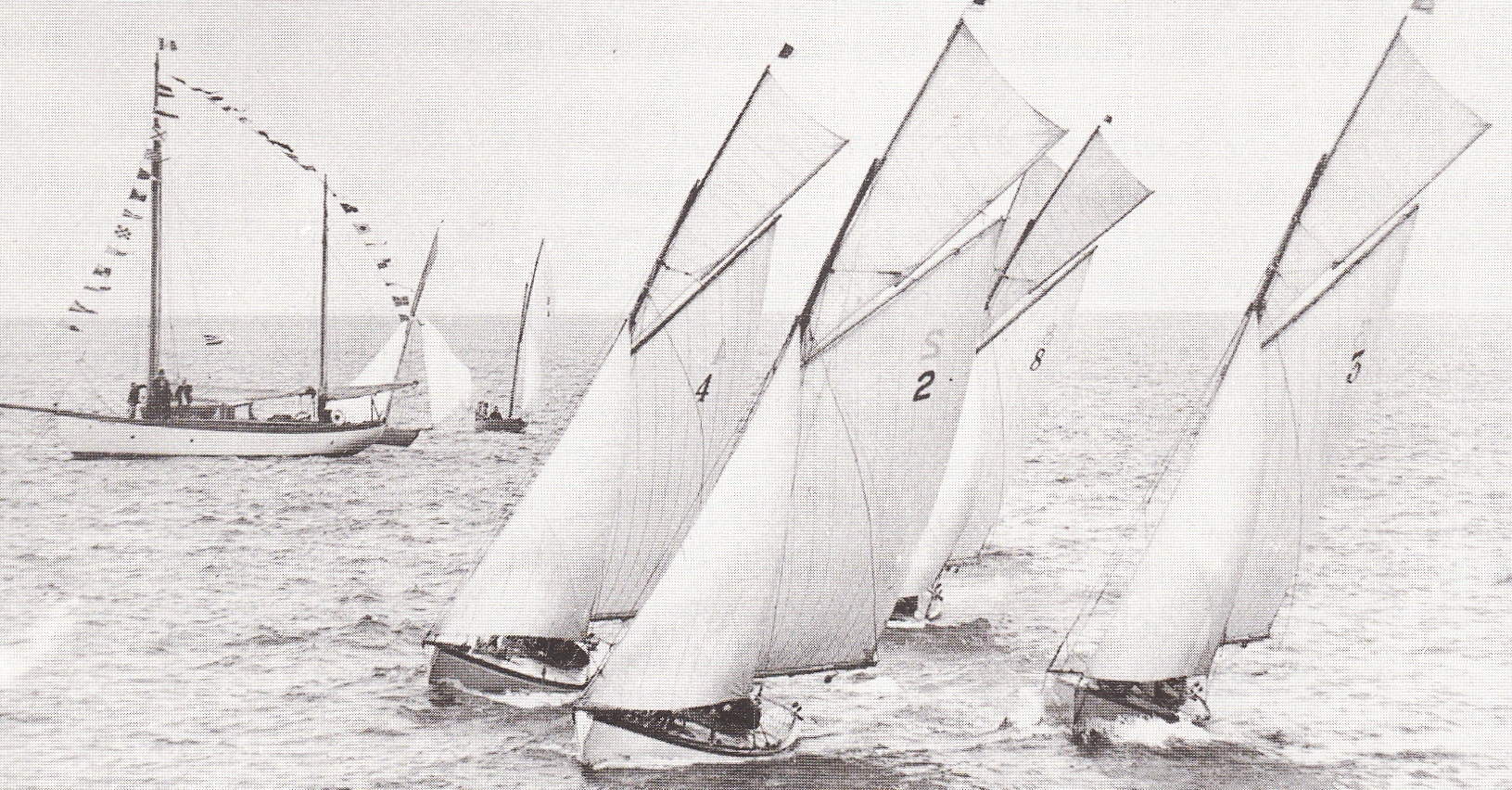
Billy Mooney’s Aideen doing duty as the Committee Boat at Howth Regatta in 1935.
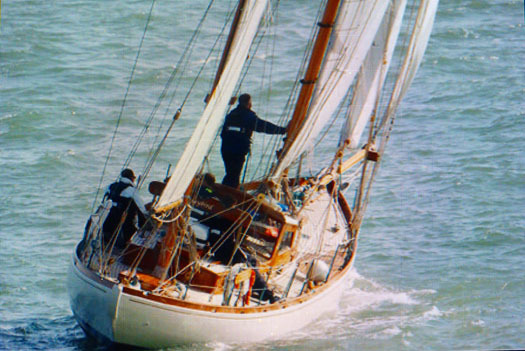
Maybird, the sister-ship of Aideen, has already reserved her marina berth to race round Lambay on June 6th, and her crew will include Paddy Cronin whose father Tom was a regular crewmember on Aideen.
Maybird made a point of visiting Howth during a round Ireland cruise three years ago because she is a sister-ship of the legendary Billy Mooney's 1934-built ketch Aideen, which was Howth-based between 1934 and 1943, and would have done the Lambay Race several times. In Aideen's regular crew in the old days was Tom Cronin, so most appropriately Tom's son Paddy – formerly ace owner-skipper of the Howth 17 Gladys - has signed on to do the Lambay Classic aboard Maybird.
A boat which definitely did the race of 1921 is the 25ft cutter
Marguerite, designed by Herbert Boyd and built by Jack Wellington in 1896 in Malahide, and as she is now owned by DBOGA President Tim Magennis and based in Dun Laoghaire she's very much expected. And so too is longtime Dun Laoghaire gaff rig enthusiast Dennis Aylmer (RIYC), who these days sails the very manageable Cornish Crabber Mona, but back in the 1960s as a very young enthusiast he played a pioneering role in the traditional boat movement by keeping a genuine Galway Hooker in commission in Dun Laoghaire.
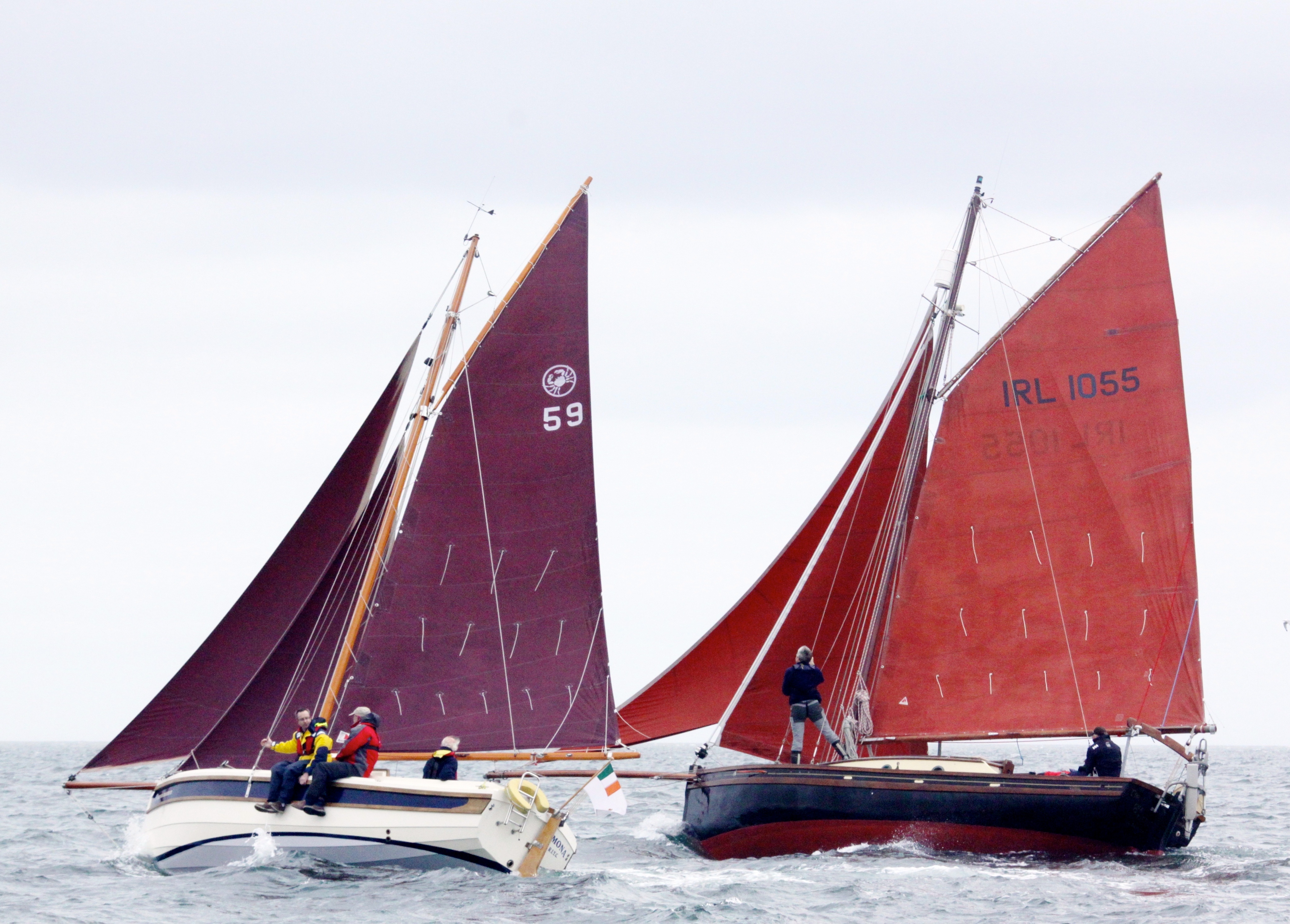
Dennis Aylmer’s Mona (left) with Sean Walsh’s Tir na nOg. Photo: Dave Owens
One of the Irish Sea's most interesting traditional gaffers, Joe Pennington's 1895-built cutter Master Frank from the Isle of Man, will also be taking part if her intrepid owner-skipper can fit the race in around plans to cruise to Brittany. Master Frank really is the business, a fine restoration of the last surviving Manx Longliner, and she is of such significance that she will feature on an Isle of Man postage stamp next month.
So it looks as though the Classic Lambay on June 6th will serve up some varied and colourful participation with the Old Gaffers, and the concept seems to have such appeal that the organisers are also receptive to the idea of giving a third starting signal from the pier to send off a class for those vintage Bermuda-rigged cruisers whose racing days are long past, but whose owners would jump at the chance to take part in the great Lambay sailing festival.
In the midst of all this excited anticipation, is there anyone out there who might be interested in getting the perfect little classic Sheila - second in 1921 - involved again? Despite her Irish Sea background of being built in the Isle of Man in 1905, and based in Dun Laoghaire from 1909 to 1922, Sheila has for the past 38 years been far away in Suffolk, where she has been lovingly maintained and restored by Mike Burn.
But now, after 38 years, he has other things in mind, so if Sheila can find a good home, she'll be sold for 18,000 sterling, which seems to me to be very reasonable value when you remember a new Shannon One Design or Water Wag could cost more. Yet Sheila is of such a handy size that she could conveniently be road-trailed to events like this year's big one, the Glandore Classics Regatta from July 18th to 24th. That is, of course, after coming to Howth and giving Ainmara a tough time in the Lambay Classic Race 2015........
Howth Yacht Club Sign Up New Lambay Race Sponsor
#hyc – With a little more than six weeks to go before the longstanding annual keelboat regatta, Howth Yacht Club has announced Davy Group as sponsors of the event. The Lambay Races affords skippers and crew of cruisers and one-design keelboats the opportunity of competing in a 'testing' coastal yacht race which is traditionally run on the Saturday after the June Bank Holiday, meaning that the event will be run on June 6th this year.
Davy Private Clients' Graham Cawley said of the announcement: 'Davy has been working withclients since 1926 helping them to plan for the future and navigate markets whatever the conditions. We are delighted to support Howth Yacht Club and to be associated with the Lambay Races - a long standing, much loved regatta, revered by sailors up and down the coast.'
In addition to the 5 cruiser classes and 6 one-design classes competing, event organiser James Markey has also included a traditional course for the 'Old Gaffers', following their successful and most welcome inclusion last year. However, brown sails and the smell of turf won't distract from the serious racing business within all of the classes, after which the infamous party will commence ashore.
#hyc – The final weekend of Howth Yacht Club's Key Capital Spring Warmer series provided another cracking days sailing yesterday writes Daragh Sheridan of HYC. There was a little less breeze than the previous weekend but there was no fall off in the excitement levels due to some great surfing conditions on the big Easterly rollers.
In the joined Class 1 and 2 Paddy Kyne's Maximus took the honours with a first and third in the final two races. He was followed in second by the star of the photos from last weekend The Big Picture (Mike and Richie Evans). Third was Dave Cullen's Checkmate being helmed by Simon Knowles as Dave Cullen was abroad.
In the largest fleet of the series Michael O'Connor on Sin Bin had a brilliantly consistent series to discard a second place to win the SB20 class for the second year running. In second was Jerry and Jimmy Dowling's Bad Kilcullen followed by Dinghy Supplies and Shane Murphy. The event provided a fantastic opportunity for the class to get in shape for their Eastern Championship to be held in Howth next weekend.
In the J24 class it was two visitors who had travelled the furthest who took the honours. First prize was Steve Atkinson from Carrickfergus followed by Martin Reilly from Sligo. In third spot was the local HYC K25 team who are preparing for a crack at the J24 Europeans later this year.
In the Squibs it was two locals to the fore with Fergus O'Kelly in first from Dave Sheahan.
The final weekend also saw the running of the Royal Alfred Niobe Trophy continuing a long standing link between the Alfred and Howth Yacht club. This saw a number of Puppeteers get their season underway with a familiar winner in the guise of Dave Clarke.
SB20s Warm-up for Howth Yacht Club Eastern Championships
#hyc – The second weekend of Howth Yacht Club's Spring Warmer series provided conditions in complete contrast to the previous week's light airs, with very strong winds testing the competitors and boats throughout the two races. Whilst it was a day to be conservative, most of the competitors in the Key Capital sponsored series could not resist the challenge of the gusty conditions and pushed their boats to the limit for the first race.
In the busy combined Class 1&2 fleet, Paddy Kyne's 'Maximus' won the first race with a minute to spare from the Kelly/Boardman half-tonner 'K1' and they then swapped positions on the finish line of their second race. In the J24 Class, Steve Atkinson's 'Bád' won the first race but Martin Reilly's 'Crazyhorse' was the only boat that managed the fierce conditions to complete race 2.
The SB20s races were unmatched for excitement and will undoubtedly provide the sailors and their boats with a great early season warm up for their Eastern Championships which are to be held in Howth directly after this series finishes. In the Squib Class, local sailor Fergus O'Kelly is declaring his intent to compete at the front end of the 2015 Squib Nationals later this year by leading the class after the first 3 races of this series.
#optimist – Last weekend saw Howth Yacht Club host their annual Brassed Off Cup regatta for the Optimist dinghy class. The event which is traditionally held on Good Friday was postponed until the following day as a cold & blustery north-westerly wind blasted down the race course for the day. And what a difference a day made, as Saturday was truly summerlike with warm sunshine and a gentle breeze.
Race officer Jim Lambkin & his team managed to get three good races in before the light NW breeze died away. The racing was tricky with slow & difficult beats against a strong ebbing tide. It became a case of the 'rich getting richer' with the first few boats to round the weather mark quickly stretching out from the fleet behind.
In the Senior fleet, the Dun Laoghaire boats revelled in the light & tortuous conditions. Jack Fahy (RSTGYC & LDYC) managed to squeeze out Clare Gorman (NYC) for 2nd, but it was to be Hugo Kennedy's day (RSTGYC). Hugo won the event convincingly with two bullets and a third and got to take the Brassed Off Cup home.
The Dun Laoghaire boats reigned supreme again in the Junior Fleet with Conor Gorman (NYC) taking gold after winning two races and coming second in the last. Alana Coakley (RSTGYC) took silver and HYC's Luke Turvey restored some dignity to the host club by taking bronze.
The Regatta Fleet was closely fought by local sailors Johnny Flynn & Alice Lacy. They got a big jump on the fleet by being the only two to finish the first race. They ended tied but Johnny took gold as a result of having bagged two firsts. Elysia O'Leary (RSTGYC) took third overall.
#hyc – Competitors at the Key Capital Spring Warmer series in Howth Yacht Club were treated to glorious sunshine on the opening weekend of the season but unfortunately for all, the wind gods weren't as generous writes Daragh Sheridan.
In Race 1 in Class 2's Dave Cullen's beautifully turned out Checkmate got off to a winning start from Maximus in second and K1 in third.
The SB20 fleet was led from start to finish by Michael O'Connor in Sin Bin despite a great second beat by Ger Dempsey on Venues World. The podium was completed by Jerry Dowling's Bad Kilcullen.
The J24 fleet had shown great commitment in getting entries from as far afield as Sligo, Carrickfergus and Lough Ree. It was a dominant performance by Steve Atkinson in Bad winning both races with Martin Reilly's Crazyhorse and Finbarr Ryan taking a second a third place in each of the two races.
Local Squib guru Fergus O'Kelly heads the fleet with two first places. Second is Brian O'Hare and Alain Deladienee followed by HYC's Dave Sheahan.
Unfortunately the SB20s and Class 1 & 2 only completed one lap before the wind shut down forcing the race committee to abandon their second race.
Hopefully we will see greater number out for the second Saturday as more boats get launched and there is no Leinster match competing for competitors attention.
Howth Yacht Club Spring Warmer Series for Cruisers, SB20's, J24's, Puppeteers & Squibs
#hyc – Howth Yacht Club's traditional season opener is run over three Saturdays with six great Windward /Leeward races, starting on Saturday 4th April 2015 with cranes and storage all included. There are starts for Cruisers 1, 2 & 3, SB20's, J24's, Puppeteers and Squibs. 'It's a fantastic way to start the season and to get your crews back into full race mode', says HYC's Darragh Sheridan. Download the sailing instructions below as a wrod file.
There will be particularly strong competition in Class 2 with a number of new runners and riders joining existing owners and crews. The SB20s will also be looking to get in some time on the water with their Eastern Championships being held in Howth on the weekend after the Spring Series.
As with previous years Key Capital Private are back as sponsors and the Royal Alfred races will be incorporated into the racing on 18th April 2015. Competitors are very welcome to just sail the Alfred races on the final day of the series.
The notice of race, online entry and sailing instructions are available on the HYC website
Famous Half–Tonner Checkmate Gets New Berth At Howth Yacht Club
#checkmateforhowth – The story is that there has been a bit of re-juggling in the Half Tonner lineup at Howth, where Dave Cullen has moved on from the historic King One which once upon a time took the Half–Ton World Cup for the legendary Paul Elvstrom of Denmark, whose Olympic gold medal scoreline is bested only by Ben Ainslie.
The good news is that King One is going to continue to sail the waters of fair Fingal. She now has a Rush-based owner, who plans to continue to keep her at Howth where they've a handy little group of classic Half Tonners sharpening up for 2015.
And a further welcome word is that Dave Cullen himself will be returning to the fray, having taken over Nigel Biggs' all-conquering Half Tonner Checkmate. This little honey has had so much TLC and classy mods made in recent years that 'tis said a statement had to be issued saying the boat is NOT called Cheque Mate...........
#laser – Seventeen Laser dinghies braved the cold blustery conditions for the final two races of Howth Yacht Club's Spring Series. It was an interesting preamble to the Round Island race on Saturday 14th March. The racing was incident packed. In the first incident of the day Dave Kirwan broke his mast on his way to the starting area, leaving him watching from the committee boat.
Race 1 started with an offshore breeze over twenty knots, kicking up a short chop. The steep waves made progress upwind difficult and on occasion helped the laser to become a submarine off the wind.
The race management team decided on a triangle sausage course and set a pin end starting line bias. This bias was just enough to allow Daragh Sheridan to pull off a dream port tack start, he even crossed the bow of Dave Cotter.
Ronan Cull led the fleet to the top mark closely followed by the pack headed by Daragh Sheridan, Ronan was to hold the lead to the finish, despite giving the fleet a chance to catch him with an upwind capsize on the second beat during one of his "roll tacks".
Dan O'Connell deviated from his usual silky style and dropped out of the racing with a capsize and a 360 degree rig rotation.
Michael Evans finished second taking advantage of a fearful capsize on the last gybe of the race by McMahon.
Race 1:
1st Ronan Cull
2nd Michael Evans
3rd Paul McMahon
4th Stephen Quinn
5th Daragh Sheridan
1st Radial Aoife Hopkins
1st 4.7 Sarah Gallagher
Race 2
1st Ronan Cull
2nd Paul McMahon
3rd Stephen Quinn
4th Michael Evans
5th Dan O'Connell
1st Radial Aoife Hopkins
1st 4.7 Sarah Gallagher
Race 2 very much a scaled down version of race 1, another pin end bias was set. This time no sailor was gutsy enough to chance a port tack start. Dan made running repairs to his boat and to his credit endured the cold to wait on the second race. and rejoin the fleet. Race two was a tighter affair with Cull piping McMahon to make it 2 wins from two races. These wins topped a great spring series by Ronan who topped the rankings by 19 points from Dan O'Connell, with Daragh Sheridan taking third place overall.
The form book will be thrown out the window for next Saturdays stand alone Round the Island Race, this classic Laser race never fails to throw out a few surprises.
Cull Leads Howth Yacht Club Laser Frostbites
#laser – The Howth Yacht Club Laser Frostbiters were treated to a fantastic two races this morning writes Daragh Sheridan.
The race committee set a Windward / Leeward course for the first race of the day. A shift shortly before the start made the first beat somewhat one sided with a premium on tacking to port as soon as possible. Ronan Cull led around the Windward mark followed by Dan O'Connell, Mike Evans, Conor Costello and Ian Mc Sweeney. Our fleet captain Ian unfortunately capsized on the downwind much to the delight of those close to him. The race stayed tight with Cull taking yet another bullet followed by O' Connell and Daragh Sheridan taking third after an uncharacteristic mistake by Evans at the final Leeward mark. Eddie Rice had a storming comeback to take fourth after having to do turns earlier in the race. Costello clearly enjoying the breeze took fifth slot.
As the breeze continued to build the race officer decided to hold an Olympic course for race 2. As a result the fleet enjoyed some high speed reaches on the perfectly laid triangle. Once again Cull lead for the majority of the race but a capsize at the final windward mark allowed both Rice and O'Connell to capitalise. O'Connell then took full advantage of a big puff down the second last reach to grab the lead and held off Rice to the finish. Cull took the final podium place with Sheridan 4th and Evans 5th.
Unfortunately there were no Radials out this morning. In the 4.7s Sarah Gallagher took two firsts from Rory McEvoy. Sarah is now tied for the overall lead with Alex Kavanagh.
Overall Positions
Full Rig
1. Ronan Cull
2. Dan O'Connell
3. Daragh Sheridan
4. Eddie Rice
5. Mike Evans
Radial
1. Ewan Mc Mahon
2. Conor Twohig
3. Aoife Hopkins.
4.7
1. Alex Kavanagh
2. Sarah Gallagher
3. Rory McEvoy


























